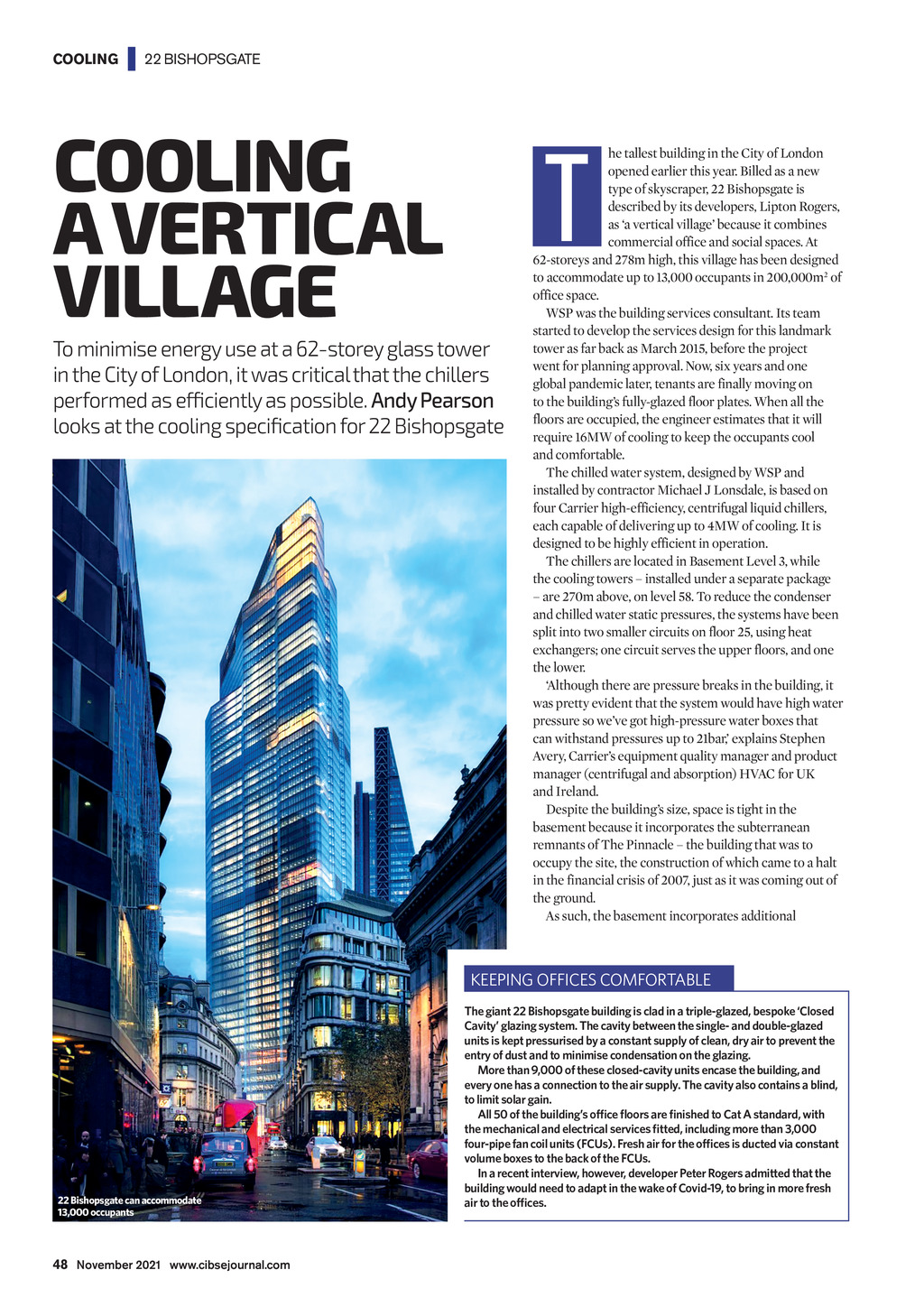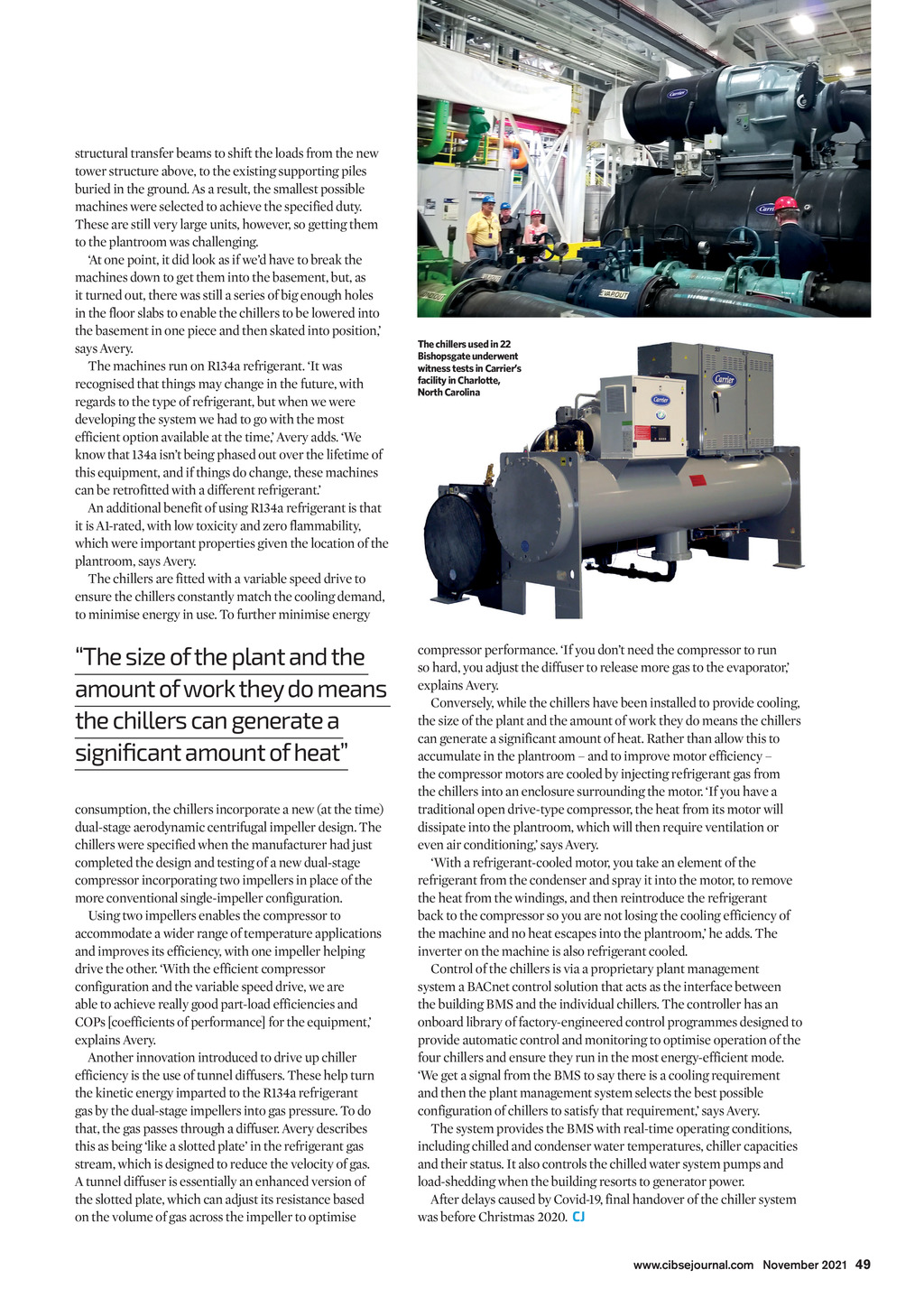




COOLING | 22 BISHOPSGATE COOLING A VERTICAL VILLAGE T To minimise energy use at a 62-storey glass tower in the City of London, it was critical that the chillers performed as efficiently as possible. Andy Pearson looks at the cooling specification for 22 Bishopsgate he tallest building in the City of London opened earlier this year. Billed as a new type of skyscraper, 22 Bishopsgate is described by its developers, Lipton Rogers, as a vertical village because it combines commercial office and social spaces. At 62-storeys and 278m high, this village has been designed to accommodate up to 13,000 occupants in 200,000m2 of office space. WSP was the building services consultant. Its team started to develop the services design for this landmark tower as far back as March 2015, before the project went for planning approval. Now, six years and one global pandemic later, tenants are finally moving on to the buildings fully-glazed floor plates. When all the floors are occupied, the engineer estimates that it will require 16MW of cooling to keep the occupants cool and comfortable. The chilled water system, designed by WSP and installed by contractor Michael J Lonsdale, is based on four Carrier high-efficiency, centrifugal liquid chillers, each capable of delivering up to 4MW of cooling. It is designed to be highly efficient in operation. The chillers are located in Basement Level 3, while the cooling towers installed under a separate package are 270m above, on level 58. To reduce the condenser and chilled water static pressures, the systems have been split into two smaller circuits on floor 25, using heat exchangers; one circuit serves the upper floors, and one the lower. Although there are pressure breaks in the building, it was pretty evident that the system would have high water pressure so weve got high-pressure water boxes that can withstand pressures up to 21bar, explains Stephen Avery, Carriers equipment quality manager and product manager (centrifugal and absorption) HVAC for UK and Ireland. Despite the buildings size, space is tight in the basement because it incorporates the subterranean remnants of The Pinnacle the building that was to occupy the site, the construction of which came to a halt in the financial crisis of 2007, just as it was coming out of the ground. As such, the basement incorporates additional KEEPING OFFICES COMFORTABLE The giant 22 Bishopsgate building is clad in a triple-glazed, bespoke Closed Cavity glazing system. The cavity between the single- and double-glazed units is kept pressurised by a constant supply of clean, dry air to prevent the entry of dust and to minimise condensation on the glazing. More than 9,000 of these closed-cavity units encase the building, and every one has a connection to the air supply. The cavity also contains a blind, to limit solar gain. 22 Bishopsgate can accommodate 13,000 occupants volume boxes to the back of the FCUs. In a recent interview, however, developer Peter Rogers admitted that the building would need to adapt in the wake of Covid-19, to bring in more fresh 48 November 2021 www.cibsejournal.com CIBSE Nov21 pp48-49 22 Bishopsgate.indd 48 22/10/2021 16:30